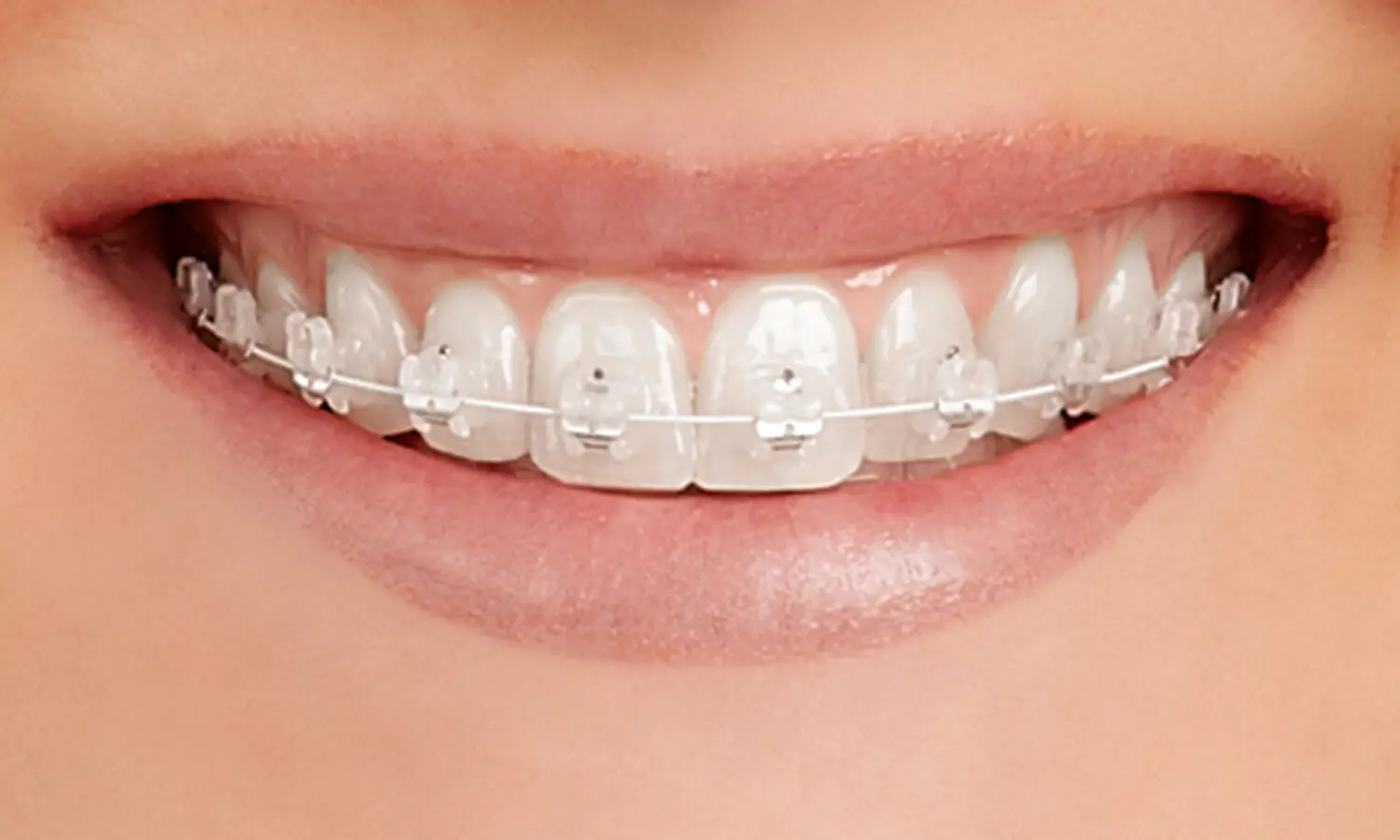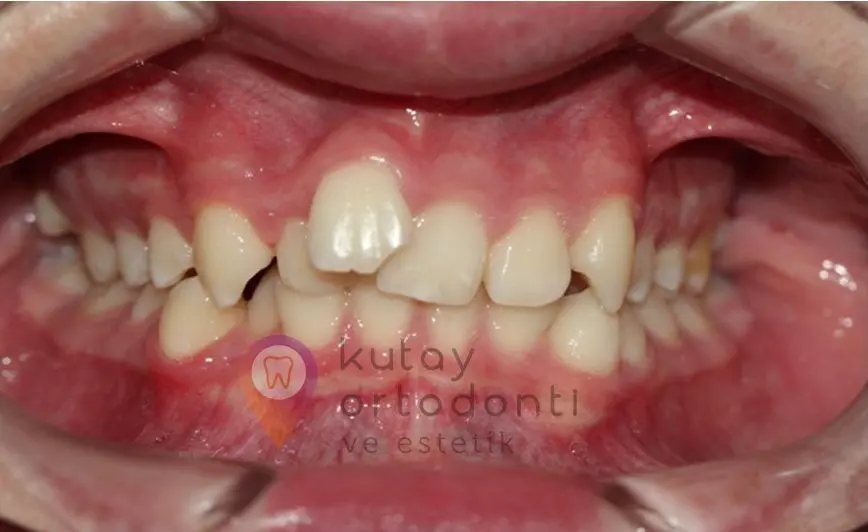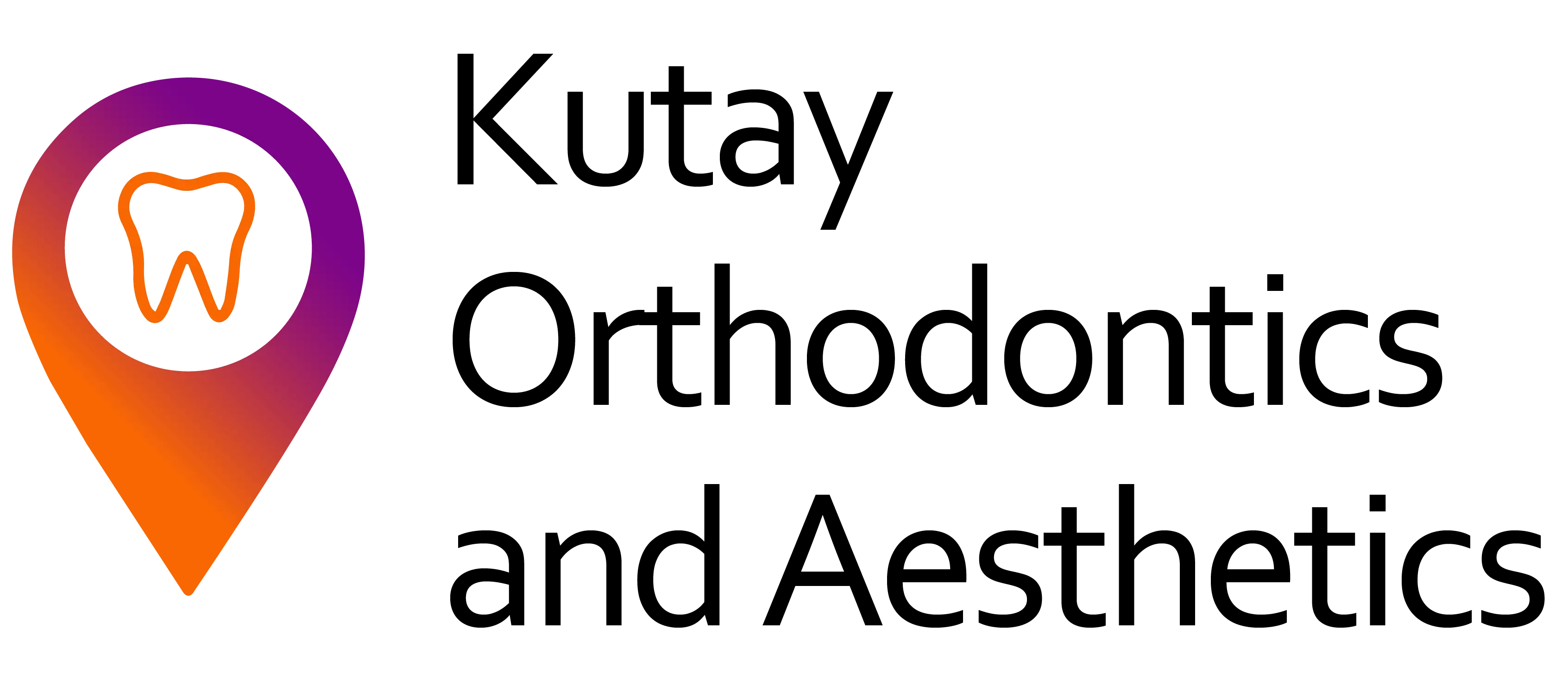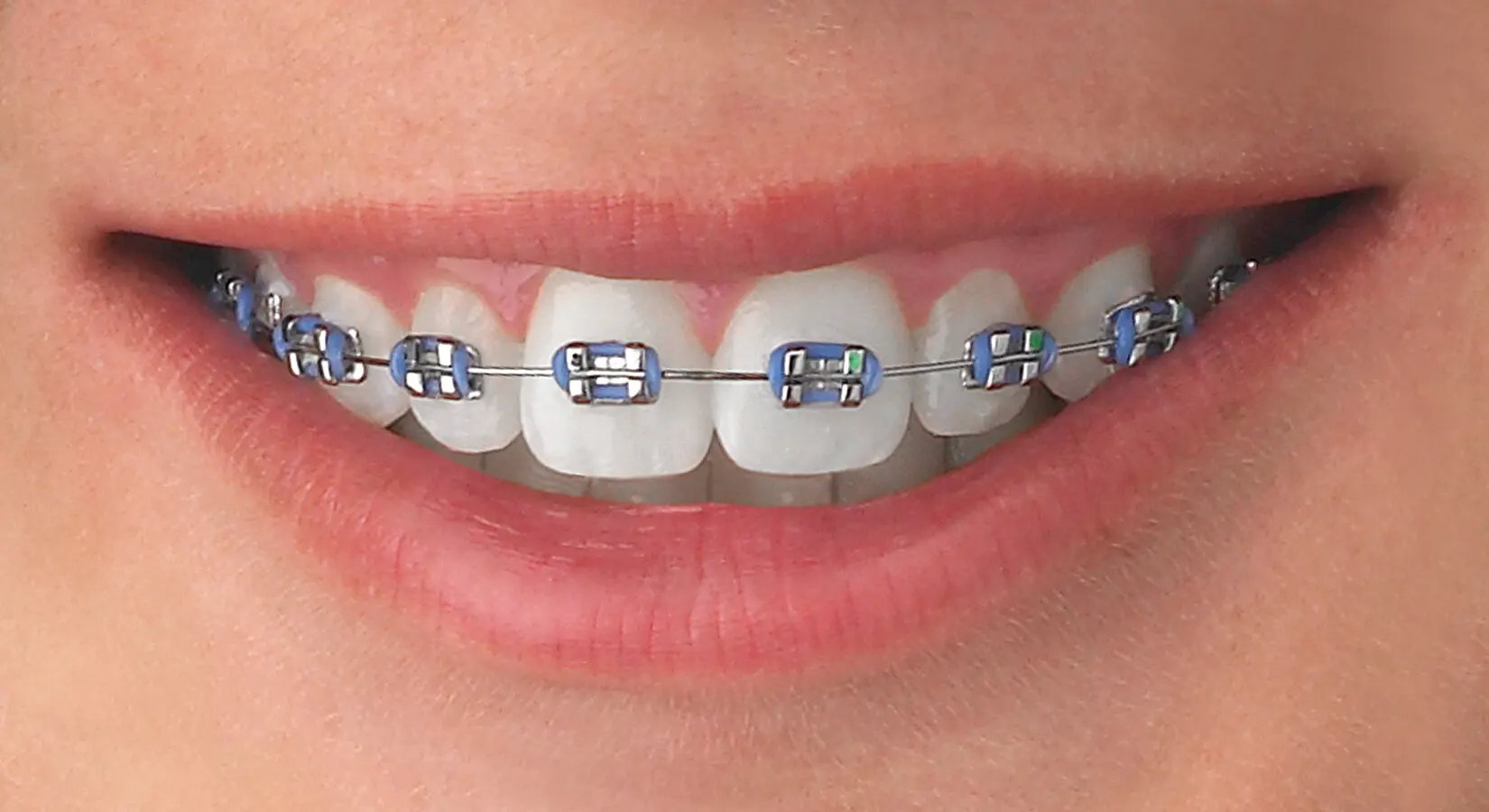Orthodontics with Braces
Orthodontic treatment is a treatment method that has been used for many years to treat disorders of the teeth and jaws. Teeth are moved to where they should be with metal or ceramic braces and arch wires bonded to the teeth.
Metal braces are the most commonly used type of braces. Made of stainless steel they are biofriendly. It can be used by attaching rubber bands to metal or in different colors throughout the treatment period. The effectiveness of the treatment is proven and reliable.
Ceramic brackets, on the other hand, are a very aesthetic treatment alternative. Arch wires placed inside the brackets can also be preferred with white (teflon) coating. In terms of treatment efficacy, it offers similar results with metal brackets.

In addition, additional applications such as intraoral rubbers, mini screws and fixed functional appliances can be used during the treatment. Sessions are applied for 4-6 weeks. Extremely hard and sticky foods should be avoided during the treatment.
Treatment with fixed orthodontic appliances for the case with the incisor anteriorly due to space constraints.
 Before Orthodontic Treatment
Before Orthodontic Treatment After Orthodontic Treatment
After Orthodontic TreatmentFrequently Asked Questions About Braces / Orthodontic Treatment
What is Orthodontics with Braces?
Orthodontics with Braces is a type of fixed orthodontic treatment in which metal or porcelain brackets are bonded to individual teeth and the teeth are straightened by placing orthodonic wires between the slots of these brackets.
Why are my teeth crooked?
As a result of the disproportion between the width of the teeth and the width of the jaw where the teeth are located, crowding or gaps may appear in the teeth. If the teeth are very large and the jaw is narrow, there will be crowding, while if the teeth are small and the jaw is wide, gaps are observed in the teeth. Likewise, the upper and lower teeth, lower and upper jaws must be in harmony with each other. Although all these mismatches can occur genetically, it can also occur due to environmental reasons such as mouth breathing, trauma, early tooth extraction.
How do braces straighten teeth?
The main force correcting crooked teeth in orthodontic treatment comes from the elasticity of the braces. The braces connected to the slots of the brackets have a memory feature. Over time, the wire takes its former shape and the teeth straighten out during this time. In the gap closing stage, non-bending steel wires are applied. Other elastic forces are given over these wires. Just like a rail system, the teeth slide and the gaps close.
Will the shape of my teeth change with braces?
Braces change the position of the teeth. Front, back, right, left and up and down directions, the teeth are aligned by displacing the body and rotationally. Intermittent teeth may overlap and crooked teeth may straighten. But if you are complaining about the shape and color of your teeth, orthodontic treatment will not relieve these complaints. In teeth with both position and deformity, improvement is achieved with orthodontic treatment first. If a sufficient aesthetic appearance is not obtained, the necessary procedures to improve the shape and color of the teeth are performed after the Orthodontics with Braces.
At what age are braces applied, do teeth straighten at any age?
Braces are applied after all milk teeth have fallen out and permanent teeth have erupted. In general, this situation corresponds to the age of 11-12 years. But in some cases, it may be necessary to start orthodontic treatments from the age of 8 years. Therefore, from the age of 8, it is best to be under the control of an orthodontist. There used to be a perception that braces only worked for young people. Braces are now applied at any age and work for everyone.
How long will my Orthodontics with Braces take?
The rate at which teeth heal with braces is related to the biology of the surrounding bone and gums. Although this rate generally does not change much, it is known that it decreases in old age. On average, teeth improve significantly in about 6 months. However, visible improvement is not enough for the end of orthodontic treatment. After the braces are removed, the straightened teeth should get used to their new places so that the teeth do not deteriorate again. Considering all these periods, orthodontic treatment should not take less than 1 year. Due to the difficulty of treatment and patient-related reasons, Orthodontics with Braces can take up to 2-2.5 years.
Is it possible to speed up the orthodontic treatment?
The best way to speed up the orthodontic treatment processis the following the doctor’s advice and appointments. It is important to have respect and understanding in the mutual patient and doctor relationship. In this way, treatments take place in which the efforts, labor and patience of which both parties are happy, result quickly. In some special cases, it is necessary to speed up the orthodontic treatment process. Various applications are available for accelerating the slowly progressing processes due to slowing bone metabolism or defects in the jawbone. In addition, the treatment process can be accelerated due to social reasons such as marriage, military service and moving. It should be noted that in such cases, consolidation therapy should continue for a longer period of time.
What are the stages of Orthodontics with Braces?
Before starting Orthodontics with Braces, all caries and calculus must be removed. In treatments that require tooth extraction, the extractions are completed and braces are bonded. First of all, treatment starts from the upper jaw and monthly controls continue. A few months later, brace are bonded to the lower jaw. Another reason is that, mechanically, some correction is required in the upper teeth in order to attach the lower braces. The first beginning of orthodontic treatment is the leveling phase where the teeth are quickly corrected. For this purpose, thin flexible braces are used. After the teeth are aligned, the second step is to close the gaps and provide the ideal closure between the two jaws. For this purpose, stronger wires and rubber are used. The final stage is the expected consolidation stage for the teeth to get used to their places. After the wire therapy is terminated, the reinforcement therapy continues. At this stage, a thin protective wire is placed behind the teeth and a clear plate is given to use at night.
Is it necessary to extract healthy teeth to correct teeth?
Tooth extraction is very common in orthodontic treatments. In particular, tooth extraction may be required when there is no room for the correction of overcrowded teeth or to be able to retract the teeth that are too protruding forward. Most cases can be treated with or without tooth extraction. The main difference that will occur here will be the end position of the anterior teeth. In treatments performed by tooth extraction, the incisors will be located more inside, while in treatments without extraction, the incisors may be a little more prominent. If extraction is required, the first premolar teeth located behind the canine teeth are extracted and the extraction gap is completely closed at the end of the treatment. The decision to extract is made through the conversation between the patient and the physician. The physician explains the results of two types of treatment to her patient, and a joint decision is reached together.
Will braces affect my speech?
Braces are placed on the front surface of the teeth . since the tongue and palate forming the speech are not affected, speech is not impaired.
Do braces cause pain?
During the application of braces, no pain is felt. Therefore, the teeth are not numbed. Half of the patients using braces may feel aching in their teeth in the first week after the braces are placed. Although this tingling is not very severe, it is kept under control with the use of painkillers. From the 2nd month of the treatment, the complaints of pain and aches are almost non-existent.
How should I eat with braces?
Brackets bonded to the teeth can be broken off by chewing hard foods. In this case, it is recommended to consume hard foods carefully, as Orthodontics with Braces may be disrupted. Particular attention should be paid to consuming large foods without biting movements and consuming small bites, removing the seeds of fruits such as plums, olives, dates and cherries with large seeds, avoiding acidic beverages touching the wires and not chewing very sticky foods.
Is there any harm in consuming tea, coffee and cigarettes with braces?
Tea, coffee and cigarette consumption have no harm to braces. As a result of frequent consumption of these foods by patients who cannot clean their braces adequately, stains may occur around the braces. These stains are not permanent, and can be removed by a dentist’s cleaning.
How are braces cleaned?
Braces should be cleaned by pressing well with a soft brush. The braces are not damaged by the brush and it is a mistake not to brush the teeth completely with this concern. In brushing, a rubbing motion with circular movements is recommended. An interface brush should be used to clean between the teeth.
What kind of brush should I use?
Interface brushes are available in various sizes and shapes. Logically, the largest brush that can enter the interface creates the most effective cleaning in that area. Since the distances between your brackets can vary between the lower and upper jaws, we recommend having several different sized brushes.
Can an electric toothbrush be used with braces?
Although it is not necessary to use an electric toothbrush, it is recommended to brush with an orthodontic brush tip if it is to be used.
What are elastics that are used with braces?
In order to adjust the closing relations of the lower and upper teeth, it may be necessary to use elastics between the two jaws. The type and use of these rubbers varies in each case. Generally, tire use may be desired in the middle and end of treatment. In some cases, ideal results can be achieved without the use of rubbers at all.
I have gap between my teeth, have an extraction space, or have congenitally missing teeth. Can the gap be closed Orthodontics?
It is possible to close gap between teeth or large gaps with orthodontic treatment. As an alternative to orthodontic treatment, these gaps can only be closed by adding porcelain or fillings to the teeth, but this harms the enamel of the teeth. Orthodontic treatment is the best treatment that can be applied without deteriorating the natural look.
I have a problem in one of my front teeth, should all teeth be braced?
In Orthodontics with Braces, support should be taken from the back teeth so that the anterior teeth can be corrected. Even in a single tooth, braces should be bonded to at least 10 teeth in the related jaw. In very simple cases, the duration of wire treatment will be quite short. However, for patients who do not want to wear braces due to a single tooth disorder, an alternative to transparent plaque treatment can be applied.
I have an impacted tooth, will it be fixed with Orthodontics with Braces?
Orthodontic maintenance of impacted teeth is successfully applied. First, the position of the impacted tooth is determined by x-ray. The probability and difficulty of eruption of the tooth are evaluated and the tooth needs space as much as its width to come out. It is determined how this place will be provided. After that, the brace treatment begins. At a certain stage, the impacted tooth is opened and an attachment is bonded to which the tooth can be extracted. Thanks to this attachment, the tooth is maintained by slowly pulling it towards the other teeth.
My teeth are too prominent, what kind of treatment do i need?
It is aesthetically undesirable for the upper teeth to be located too front. In addition, it is more difficult to maintain the hygiene of the teeth located in the front and are more exposed to impacts. Retraction of the upper teeth is possible with Orthodontics with Braces. In order for the teeth to be taken backwards, there is a need for space. This space requirement is achieved by tooth extraction, moving the teeth back completely, or grinding between teeth. In some cases, the upper teeth appear anteriorly even if they are in place. This is because the lower teeth are positioned behind. Because the lower teeth are behind, the upper teeth appear relatively in front. In this case, orthodontic treatments are applied in which the lower teeth and lower jaw will be taken forward.
My teeth are too much retrusive, what kind of treatment do i need?
Too much at back teeth can make a person look old. Because the teeth are too much at back, few teeth are visible in a smile and the lips are also fuzzy as the teeth support the lip less. Bringing the teeth forward is possible with Orthodontics with Braces. If the problem is caused by the chin, first of all, a correction is aimed at the chin. If the person’s growth and development continues, the jaws are brought forward with orthopedic jaw treatment. If growth and development has stopped, an alternative to orthognathic surgery is discussed. Teeth can also be brought forward with only dental intervention. By creating a space between the teeth, the front teeth can be moved further forward. The most accurate treatment is determined by the cooperation of the physician and the patient among the possible options.
Besides my teeth, I also have a problem with my jaw, will the jaw disorders be corrected with braces?
Jaw disorders are also included in the scope of orthodontic treatment. Jaw disorders can be corrected without surgery by orthodontists at the age when growth and development continues. After the age of 18, orthognathic surgery is recommended for patients who want to improve their chin. In patients who do not want jaw surgery, if possible, teeth are improved with braces to cover the current situation.
Will my teeth be restored after orthodontic treatment?
After every orthodontic treatment, there is the possibility of recurrence. Reinforcement therapy is applied to prevent recurrence. In the retention, a thin retainer brace is applied to the back of your teeth and covered with a white filling. Also, a transplant plate is used at night. Reinforcement therapy should last for half the duration of active therapy. 1 year after wire treatment is very important for reinforcement.
What are the prices of braces?
Braces prices are determined by the type of wire used, the number of jaws to be treated, and the presence of additional applications such as jaw expansion. The most affordable option is single chin orthodontic treatment with metal braces. Also, The price can be changed in installments or cash payments. The vast majority of patients make a price-based choice for treatment. However, as in education, it is necessary not to compromise on quality in health. Considering that patients will take great risks in long-term orthodontic treatments, use of poor quality materials and inability to successfully terminate the treatment, searching for the most affordable place may not always be the right idea for poor health. In order to avoid negative results, more important than the price, it is of primary importance that the treatment is performed by a specialist physician and that the physician shares transparent information about the treatment. The comfort of being treated in a comfortable and reliable environment is very important.




